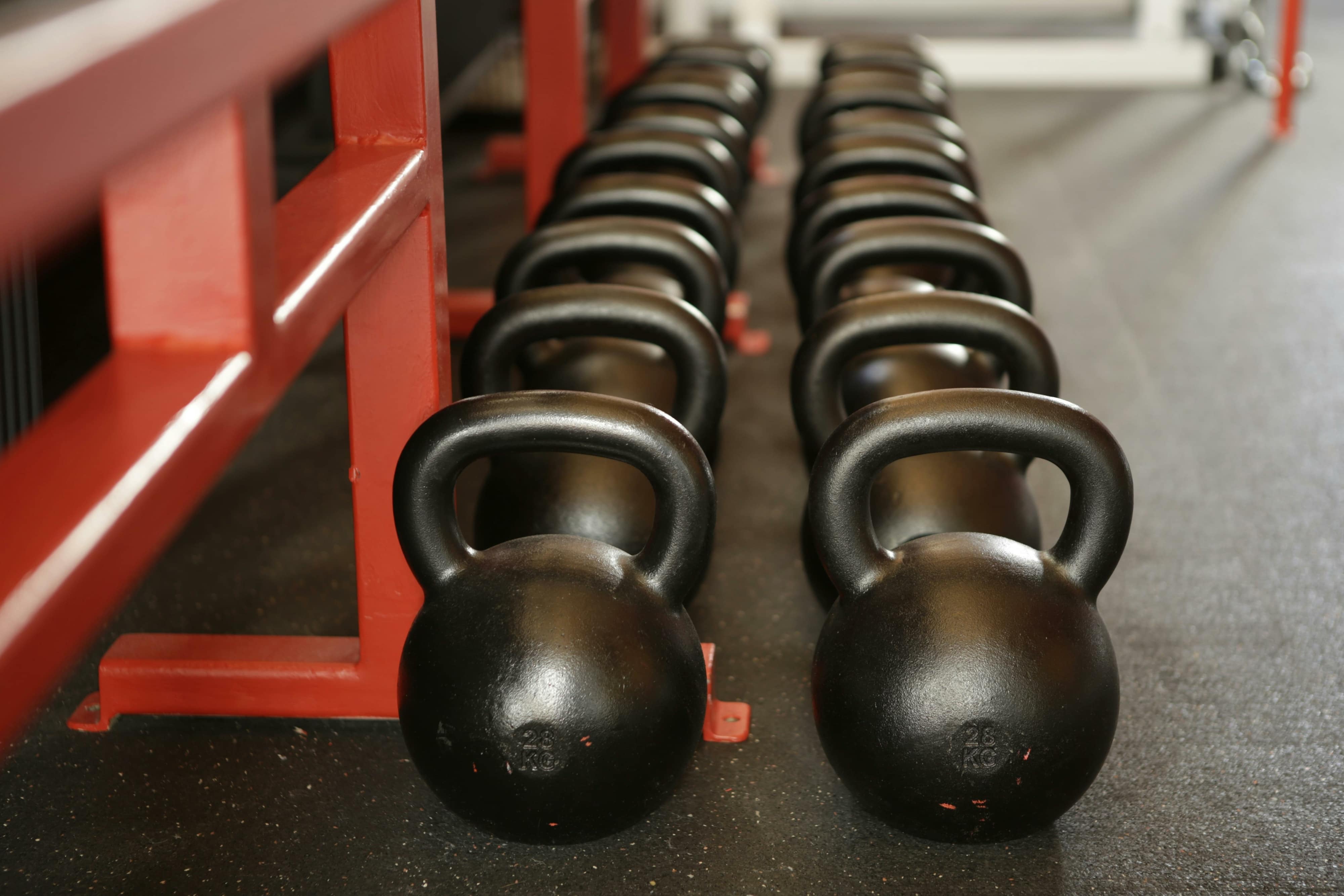Does your client complain of an ‘overall feeling of collapse and weakness’ in their cores? Is your client getting increasingly self-conscious about their rounded, protruding belly ‘pooch’ – and desperate for your help in getting rid of it?
Has your client recently given birth? Then, chances are, she’s dealing with a common postpartum abdominal condition: diastasis recti.
Contrary to popular belief, diastasis recti isn’t just a cosmetic concern. When left untreated, it can cause several functional problems – including back pain, an overactive pelvic floor, and incredibly tight hips and glutes.
These can make achieving proper form and technique during their workouts near ‘Mission Impossible’. In turn, significantly increasing their risk for injuries. Not ideal.
That’s why this article outlines the basics of what you need to know about working with clients struggling with diastasis recti, so you can help them rebuild their core strength and minimize their degree of ab separation (to the best of your abilities).

FREE TRIAL
Experience the AFPA Pre & Postnatal Fitness Specialist Course Firsthand for Free!
Experience 2 full modules from the AFPA Pre & Postnatal Fitness Specialist Certification Course for 14 days. No credit card required!
What Is Diastasis Recti?
Diastasis recti is also known as abdominal separation.
This condition is typically observed in postpartum women (with a 2015 study suggesting that nearly all women experience at least some degree of ab separation at the end of their pregnancy!)
Thanks to pressure from an expanding uterus and a growing baby beneath, the abdominal muscles become stretched, lengthened, and weakened throughout pregnancy.
Depending on a mother’s core strength and genetics, the pressure can then cause the 2 sides of the rectus abdominis – what’s commonly known as the ‘six-packs’ – to pull apart from their attachment point, the linea alba.
This creates a gap between the 2 sides of the abdominal muscles and can leave a visible bulge or gap after delivery.
That said, because diastasis recti’s underlying cause is an excessive, built-up pressure behind the abdomen, it’s important to note that it can also affect non-postpartum clients (e.g. men). With these clients, the separation can be a result of the following:
- Undergoing rapid weight changes
- Lifting heavy weights with improper form
- Performing excessive abdominal exercises
Thankfully, you can pretty much use the same approach in addressing a client’s diastasis recti – regardless of whether they’re postpartum or not. But more on that later.
How to Know If Your Client Has Diastasis Recti
Checking if your client has diastasis recti is pretty straightforward. Here’s a step-by-step guide that’ll walk you through the process:
- Have your client lie on their back, legs bent, with their feet on the floor.
- Get them to do a ‘mini abdominal crunch’, where they lift their head slightly off the ground while keeping their shoulders down.
- Gently press down on the midline of your client’s rectus abdominus muscle, just above the belly button.
- If you feel a gap of 1 to 2 finger lengths between the 2 abdominal walls, chances are, your client has diastasis recti.
Physically confirmed that your client has diastasis recti?
Don’t jump right into designing a workout routine for them! Encourage your client to consult their primary healthcare provider for an official diagnosis.
A licensed doctor will be able to do a thorough physical exam (which can sometimes involve imaging with ultrasound or CT scan) to determine if your client indeed has diastasis recti – and, if so, how severe it is.
Make sure your client seeks the all-clear from their doctors before starting them on a workout program.
Coaching a Client Struggling with Diastasis Recti
At this point, your client should be medically cleared to proceed with an exercise routine. That’s great. The only problem being, how, exactly, can you help a client navigate their diastasis recti recovery journey?
Here are a few tips to keep in mind.
Focus on Strengthening the Transverse Abdominis
When working with a client struggling with diastasis recti, your primary focus is to help them strengthen their abdominal muscles.
You can’t just rely on the same old core exercises you use for other clients, though.
Instead, you’ll have to select exercises that specifically target the transverse abdominis (TVA). Take this 2018 study published in the Journal of Women’s Health Physical Therapy, for instance.
The researchers concluded that workouts targeting the TVA could be an effective, non-invasive way to reduce the inter-recti distance.
Wondering why that’s so?
Well, it’s because, anatomically speaking, the TVA is one of the deepest layers of abdominal muscles; it forms a wall-like sheath to protect the inner organs.
This crucial core muscle starts below the last rib, on either side of the spine, wraps around to the front of the body, and ends by inserting into the linea alba.
In other words: you can think of the TVA as something like a ‘corset’.
Strengthening the TVA has the same effect as tightening the laces on a corset; this pulls the entire core region together – essentially reducing the distance between the 2 sides of your client’s abdominal muscles.
Examples of postpartum-friendly exercises that’ll work the TVA include diaphragmatic breathing, posterior pelvic tilts, dead bugs, and side planks.
Also, avoid having your client do core exercises that involve spinal flexion (e.g. sit-ups and crunches). This can place excessive pressure on the abdomen and, in turn, exacerbate the condition.
An easy way to tell if a particular exercise is suitable for your client is to observe their core as they perform the movement.
If their belly rises in a dome or mountain-like formation vertically along the midline of their abdomen, get your client to stop – and switch exercises.
Reinforce Proper Breathing Techniques
Does your client hold their breath through all their reps?
That’s a no-no for most clients (unless you’ve specifically asked them to perform the Valsalva maneuver) – but especially for those struggling with diastasis recti.
Breath-holding during a lift has been shown to significantly drive up intra-abdominal pressure, which, obviously, isn’t ideal for a client trying to coax their ab muscles back together.
It’s not just all about avoiding excessive intra-abdominal pressure, too.
Using proper breathing techniques through a lift can also help your client better engage their deep core muscles (including their TVA!) This, in turn, equals more power and more stability.
So, be sure to have your client inhale on the eccentric portion of the lift, then exhale during the concentric phase.
Of course, when you cue it as such, you can almost certainly expect some clients to look at you with a puzzled expression … and ask, “How would I know which portion of the lift is concentric, and which is eccentric?”
Don’t worry: a helpful and less confusing way to cue proper breathing technique is to ask your clients to exhale on exertion (i.e. through the hard parts).
In line with this, keep checking in with your client about how they feel with the different weights and exercises. Push them too hard, and they’ll literally forget to breathe.
You can use a scale called the Rating of Perceived Exertion (RPE); this is a subjective scale where clients rate how exerted they are during an exercise.
1 is extremely easy, and 10 is extremely hard.
Ratings between 6 to 8 are typically considered the ‘sweet spot’ for when a client is challenged – but not to the point they have to use the Valsalva maneuver to complete their reps.
Help Your Client Get into Good Alignment in Their Daily Life
Chances are, your client, like so many in the world right now, is navigating a new home office lifestyle. And in general, simply spending more time at home. Especially so for a postpartum client – who’s adjusting to the 24/7 demands of caring for a newborn.
It’s all too easy for them to slump over their computers, phones, and even babies in their daily life. This brings about 2 undesirable results:
- A weakening of muscles (e.g. abs and the glutes) that’s supposed to be active, and
- An overactivation of muscles (e.g. the hip flexors and erector spinae) that aren’t supposed to be
In turn, pulling your client’s posture into a chronic ‘rib thrust’ position (aka the anterior pelvic tilt). The consequences of being in a perpetual anterior pelvic tilt are well-documented. They include lower back pain, low activation of glute muscles, and tight hamstrings.
But for a client struggling with diastasis recti, in particular, the posture could place further stress on the linea alba (i.e. the attachment point of the rectus abdominis).
To help your client get his/her body back into good alignment, you can use the following cues:
- Stand with the feet positioned directly under the hip bones and pointing straight ahead.
- Position the rib cage over the pelvis.
- Allow a slight arch in the lower back to prevent the tailbone from tucking under the torso.
- Focus on maintaining a tall thoracic spine while keeping the earlobes in line with the shoulders. Allow a gentle forward rounding at the top section of the spine.
Encourage your client to use this alignment in all exercises and daily life (e.g. when carrying their baby). You may also want to program in exercises that’ll help stretch the hip flexor muscles – and those that’ll strengthen the glutes.
Set the Right Expectations from the Very Beginning
It is important to manage client expectations right from the start. Have them know that, even with targeted exercises, their abdominal muscles may never fully come back together.
The unfortunate truth is that there’s still no international consensus – amongst medical experts and researchers alike – on the treatment of diastasis recti. Studies consistently show that the role of all current, viable treatment options (e.g. physical therapy and surgery) is controversial in improving the condition as a whole.
Upon learning this, your client may (understandably) be upset. Especially if they’d hired you specifically to help ‘fix’ their diastasis recti.
That’s why you’ll have to demonstrate empathy as you educate your client.
You can say something like, “I can see how learning about this would be difficult for you. While targeted exercises may not close the gap completely, they can help you build a strong, functional core.”
Drive home the point that core work shouldn’t be viewed only as an ‘aesthetic’ solution – but also a functional one that’ll help your client in their fitness journey.
Functional benefits to mention during your talk with your client include:
- Reduced back pain: Research consistently shows that core strength training (and training the deep trunk muscles, specifically) can help alleviate lower back pain.
- Athletic performance: The core is involved in almost every sports action. With a strong core, your client will likely be able to lift heavier, run faster, and jump higher (amongst other athletic pursuits).
- Future pregnancies: Core-strengthening is exceptionally crucial if your client is planning to get pregnant again. A 2019 study found that abdominal strengthening programs provided to pregnant women can help decrease the severity of diastasis recti.
Main Takeaways
Ultimately, it’s worth remembering that helping your client tackle diastasis recti is so much more than just working on strengthening the transverse abdominis, improving breathing techniques, and reinforcing good alignment in everyday life.
It also involves working closely with your client to understand what they’re facing – and what they should expect during their diastasis recti recovery journey (e.g. providing recommendations for post-partum nutritional needs). Exercise empathy for what your clients are dealing with and do your best to work out the most suitable approach.

FREE TRIAL
Experience the AFPA Pre & Postnatal Fitness Specialist Course Firsthand for Free!
Experience 2 full modules from the AFPA Pre & Postnatal Fitness Specialist Certification Course for 14 days. No credit card required!
References
- https://www.ncbi.nlm.nih.gov/books/NBK179548/
- https://doi.org/10.1589/jpts.27.619
- https://doi.org/10.1186/s40945-020-00090-y
- https://www.healthline.com/health/diastasis-recti
- https://doi.org/10.1302/2058-5241.5.190017
- http://www.ncbi.nlm.nih.gov/books/NBK551649/
- https://doi.org/10.1519/SSC.0000000000000218
- https://doi.org/10.3389/fsurg.2019.00065
- https://doi.org/10.5603/GP.a2018.0016
- https://doi.org/10.1016/j.math.2014.09.002
- https://doi.org/10.1136/annrheumdis-2019-eular.6975
- https://doi.org/10.4103/jmas.JMAS_103_17
- https://doi.org/10.1080/02640414.2014.889845
- https://doi.org/10.1097/JWH.0000000000000101
- https://doi.org/10.1519/SSC.0b013e3181d58aac



